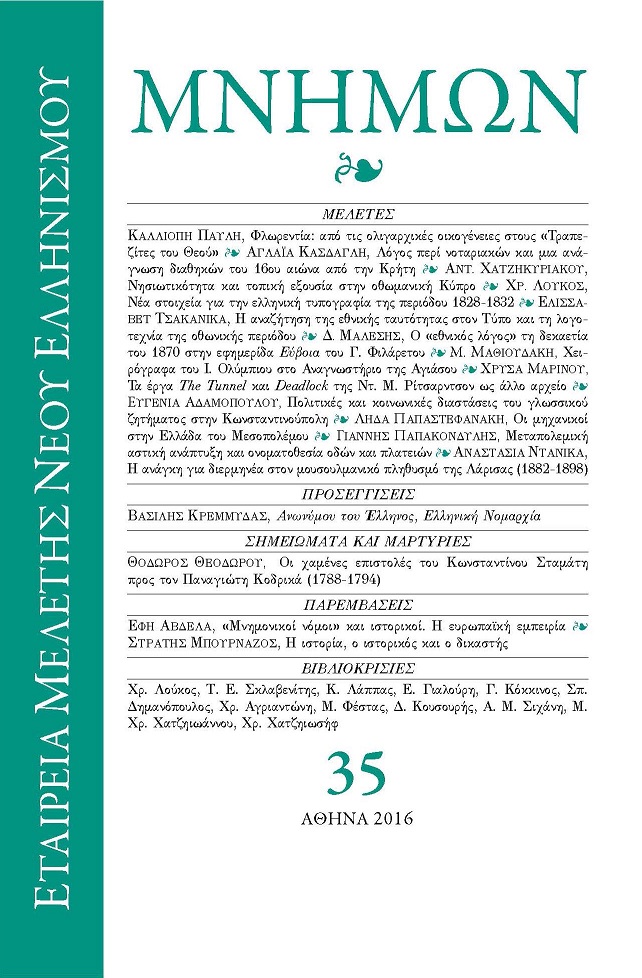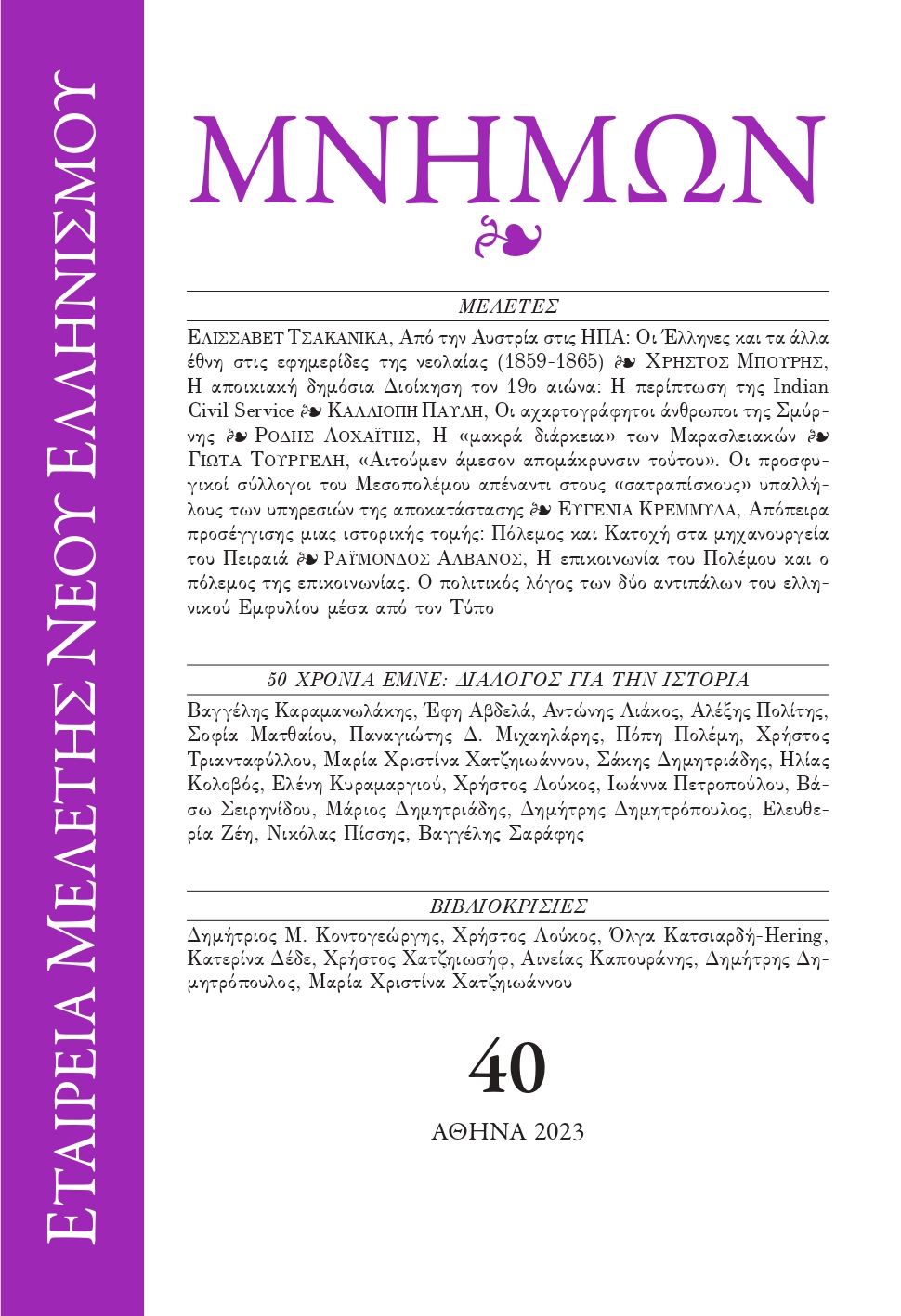European and Greek ethnic identity in the press and literature of the ottonian period

Published:
Apr 22, 2019
Keywords:
Greek ethnic identity press literatutre
Abstract
The present article attempts a parallel study of two complementary means of political expression during the ottonian period: literature and the press. Its purpose is to depict the different aspects of the making of a bipolar ethnic identity, dangling between the Greek and the European. The nation’s selfimage is largely a reflection of the image that Europe has formed of the nation. Greek society possesses a range of stereotypes concerning Europe: Europe comes in, either as a judge, favourably or unfavourably prepossessed towards Greece and the Greeks, or as a model of social and political order, or as an image of the “non– ethnic”, which enables the nation to boast of its own uniqueness. Since the Greek antiquity constitutes the cradle of both “enlightened Europe” and modern Greece, the nation’s attempt at “exarchaismus”, aims at creating bridges between greekness and europeanisation. Particularly during the first post war years, Greece evaluates its past and present through the filters bequeathed the newly –founded state by the European Enlightenment movement. Consequently, Greece adopts Europe’s depreciation towards Byzantium and keeps its distance from the “Orient” that the Slavs represent, by fear of providing arguments to those who adopt Falmerayer’s theories of the Greeks being the descendants of Slavs. Gradually, however, a new use of the term “Orient”, constitutes a complete inversion of the existing European stereotypes, and serves the purpose of introducing the notion of the several historical missions of hellenismus, inspired by the ideals of national romanticism. The non indigenous Greeks, as well as the Bavarians, are acknowledged to embody the cultural and ideological superiority of the West and are therefore preferred in the manning of the new state. This stirs feelings of bitterness and resentment and a negative image of the West amongst the indigenous Greeks. The conservative profile of greek “indigenism” is enhanced by the pursuit of the “Great Idea” and the belief that there are much more urgent needs than the aesthetic education and moral refinement that Europe stands for. Given that neither the “greekness” nor the European orientation of thenation are adequately proven when they simply concern a limited circle of scholars, scholarship is not a value in itself during the ottonian period. The ottonian society is bequeathed two complementary “ideal types” (in the weberian sense) by the Greek War of Independence. Those are: the “fighting scholar” and the “schooled warrior”. The first term stands for scholars who take an active part in the War and the second for the fighters who are initiated into the ideals of the national revolution, and all the ideological motifs of the modern world. It is important to ensure that the traditional brigands who made the war of independence possible, are acknowledged to embody the “Nation’s soul” and to be the living proof of the nation’s historical continuity. As a rule, the various aspects of European identity are evaluated positively or negatively, depending on how much they serve Adamantios Korais’ idea of the “metakenosis”, in the sense of the repatriation of Greek cultural heritage from Europe. Those customs, ideas or morals which bear no relevance to the Greek heritage are rejected, as well as those whose origins are to be found in a distant pre Enlightenment European past.
Article Details
- How to Cite
-
ΤΣΑΚΑΝΙΚΑ Ε. (2019). European and Greek ethnic identity in the press and literature of the ottonian period. Mnimon, 35(35), 107–139. https://doi.org/10.12681/mnimon.20087
- Issue
- Vol. 35 (2016): Μνήμων
- Section
- ARTICLES

This work is licensed under a Creative Commons Attribution-NonCommercial-ShareAlike 4.0 International License.
The copyright for articles in this journal is retained by the author(s), with first publication rights granted to the journal. By virtue of their appearance in this open access journal, articles are free to use (with the exception of the non-granted right to make derivative works) with proper attribution for non-commercial uses (licence Creative Commons 4.0). EKT/NHRF retains the worldwide right to reproduce, display, distribute, and use articles published in Mnimon in all formats and media, either separately or as part of collective works for the full term of copyright. This includes but is not limited to the right to publish articles in an issue of the Journal, copy and distribute individual reprints of the articles, authorize reproduction of articles in their entirety in another EKT/NHRF publication, and authorize reproduction and distribution of articles or abstracts thereof by means of computerized retrieval systems.Downloads
Download data is not yet available.



